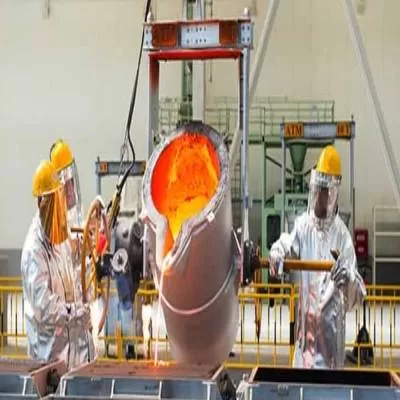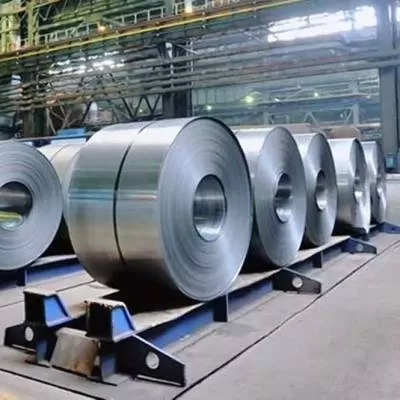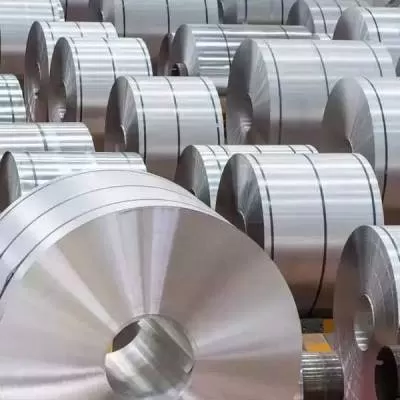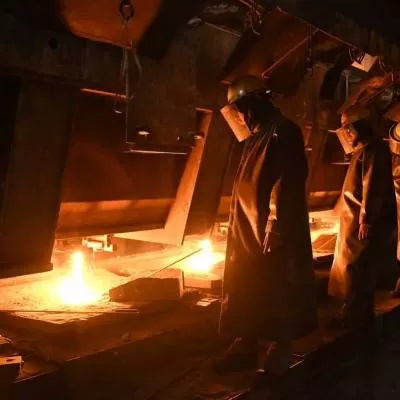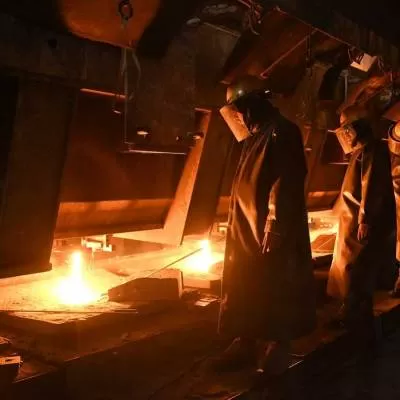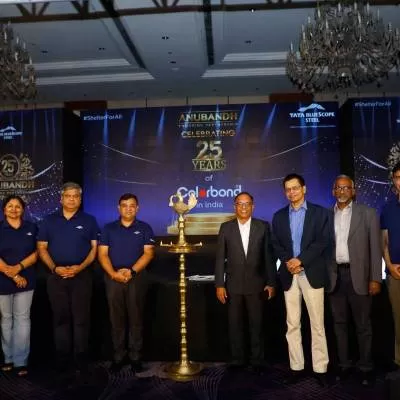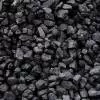- Home
- Building Material
- Steel
- Indian stainless steel consumption touches 2.5 kg per capita
Indian stainless steel consumption touches 2.5 kg per capita
Asserting the role of ISSDA in this achievement, President, ISSDA, KK Pahuja, said, “As the torchbearer for the Indian stainless-steel industry, ISSDA has been promoting new stainless steel applications across the spectrum of industries since its inception. With the achievement of 2.5 kg per capita consumption level in short span of time, India has reached an inflexion point and entered in the league of countries of where stainless-steel consumption is recorded on the higher side. India is now the fastest growing market for stainless steel. ISSDA expresses its gratitude to the domestic industry and the Government for their continued support.”
Rasika Chaube, Additional Secretary, Ministry of Steel; Anant Kumar, Additional Director General, CPWD; Dr Mukesh Kumar, Director SRTMI; Chairman and Managing Director, Jindal Stainless, Rattan Jindal, and other industry leaders were also present on this occasion.
The stainless steel sector has consistently evolved over the past three decades across all parameters, including production, R&D and consumption patterns. From less than 1 tonne production in the 1980s, India is currently the second largest producer and consumer of stainless steel in the world. Today, India has grown to be a stainless steel exporting nation from being a net importer in the 1980s. The mettle of Indian stainless steel is proven by the fact that domestic players are exporting stainless steel flat and long product to quality-conscious markets like the US and EU. Indian stainless-steel market is the fastest growing markets in the world with a CAGR of 8-9 per cent. High recyclability, resistance to corrosion, and a virtually maintenance-free life make stainless steel an indispensable metal for diverse sectors including railways, metro projects, bridges, nuclear, transportation, heavy machinery, process industries, kitchenware, etc.
Addressing the challenges faced by the domestic stainless steel industry will add to the growth of consumption. Amidst growing trade protectionist sentiment across the globe, the growing Indian market has become an easy target for dumping of the surplus production from ASEAN producers. Low entry barriers for goods due to operational FTAs with ASEAN, Japan and Korea distort the demand-supply dynamic and adversely impact the domestic manufacturers. Almost half of the industry in the MSME sector has been particularly hit by cheaper imports. Further, a higher input cost on account of import duty on key raw materials, like stainless steel scrap and Ferro nickel, makes the Indian product less competitive than its global peers. ISSDA has flagged these issues with the government and is working to remove the growth hurdles for domestic industry.
- Stainless steel
- ISSDA
- steel
- Indian Stainless Steel Development Association
- Faggan Singh Kulaste
- Architecture
- Building & Construction
- Automobile
- Railways & Transport
- ART
- Process Industries and White Goods
- KK Pahuja
- CPWD
- R&D
- CAGR
- railways
- metro projects
- bridges
- nuclear
- transportation
- heavy machinery
- process
- industries
- kitchenware
- challenges
- consumption
Per capita consumption of stainless steel in India has touched a new peak of 2.5 kg in 2019, against 1.2 kg per capita in 2010, registering an increase of over 100 per cent in a period of just eight years. This milestone achievement was announced during the inaugural session of the 30th foundation anniversary celebration of the Indian Stainless Steel Development Association (ISSDA), attended by Minister of State, Ministry of Steel, Faggan Singh Kulaste. Henceforth, India ranks among top 15 countries in the world in terms of per capita consumption of stainless steel. This was accomplished through collaborative efforts of the domestic stainless steel industry led by ISSDA, along with the pro-industry policy initiatives of the Ministry of Steel. Stainless steel demand in diversified applications such as Architecture, Building & Construction (ABC), Automobile, Railways & Transport (ART), Process Industries and White Goods, apart from conventional use in kitchenware and utensils, led to this increase. Lauding this milepost, Minister of State, Ministry of Steel, Shri Faggan Singh Kulaste, added, “Growth rate of stainless steel demand in India is to the tune of 6-7 per cent CAGR, which is also amongst the highest in the world, as stainless steel demand is directly linked to the economic growth. Stainless steel not only has a low life-cycle cost, but improves overall quality of life. I compliment the industry for this achievement and assure support for future growth of the industry.” Asserting the role of ISSDA in this achievement, President, ISSDA, KK Pahuja, said, “As the torchbearer for the Indian stainless-steel industry, ISSDA has been promoting new stainless steel applications across the spectrum of industries since its inception. With the achievement of 2.5 kg per capita consumption level in short span of time, India has reached an inflexion point and entered in the league of countries of where stainless-steel consumption is recorded on the higher side. India is now the fastest growing market for stainless steel. ISSDA expresses its gratitude to the domestic industry and the Government for their continued support.” Rasika Chaube, Additional Secretary, Ministry of Steel; Anant Kumar, Additional Director General, CPWD; Dr Mukesh Kumar, Director SRTMI; Chairman and Managing Director, Jindal Stainless, Rattan Jindal, and other industry leaders were also present on this occasion. The stainless steel sector has consistently evolved over the past three decades across all parameters, including production, R&D and consumption patterns. From less than 1 tonne production in the 1980s, India is currently the second largest producer and consumer of stainless steel in the world. Today, India has grown to be a stainless steel exporting nation from being a net importer in the 1980s. The mettle of Indian stainless steel is proven by the fact that domestic players are exporting stainless steel flat and long product to quality-conscious markets like the US and EU. Indian stainless-steel market is the fastest growing markets in the world with a CAGR of 8-9 per cent. High recyclability, resistance to corrosion, and a virtually maintenance-free life make stainless steel an indispensable metal for diverse sectors including railways, metro projects, bridges, nuclear, transportation, heavy machinery, process industries, kitchenware, etc. Addressing the challenges faced by the domestic stainless steel industry will add to the growth of consumption. Amidst growing trade protectionist sentiment across the globe, the growing Indian market has become an easy target for dumping of the surplus production from ASEAN producers. Low entry barriers for goods due to operational FTAs with ASEAN, Japan and Korea distort the demand-supply dynamic and adversely impact the domestic manufacturers. Almost half of the industry in the MSME sector has been particularly hit by cheaper imports. Further, a higher input cost on account of import duty on key raw materials, like stainless steel scrap and Ferro nickel, makes the Indian product less competitive than its global peers. ISSDA has flagged these issues with the government and is working to remove the growth hurdles for domestic industry.



